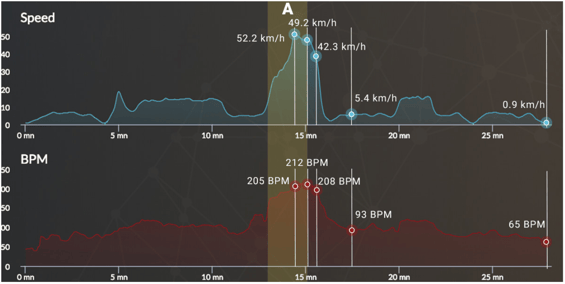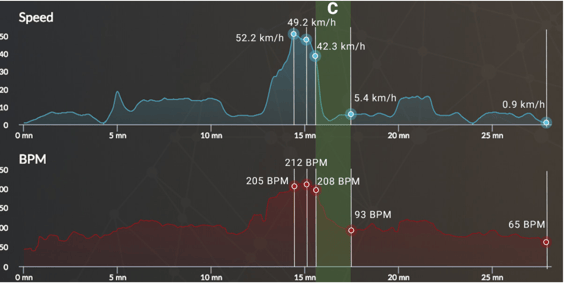Measuring the heart rate of a racehorse provides information on his physical condition, fitness level and adaptation to training. The heart rate fluctuates linearly with the horse's speed.
1. How to analyze heart rate?
- Heart Rate (HR) is measured by the number of beats per minute of the horse’s heart (bpm).
- You should analyze it according to speed and establish the quality of recuperation.
- Resting HR and maximum HR are specific to each horse and are not indicators of performance.
2. How to analyze recovery?
The analysis of recovery allows the trainer to judge the way the training was assimilated by the horse in order to plan the next session accordingly.
In order to analyze recovery, 4 zones of the HR evolution during the training can be useful.
- HR when leaving the stable: it’s useful to analyze the HR before the effort as it is the first one EQUIMETRE registers. Each horse has a specific one and it doesn’t give any indication on his fitness.
- HR during warm-up: HR should stabilize and then slow down a little bit once the horse is completely warmed up and ready to cope with a harder effort.
If you see that he has an abnormally high HR while he appears calm, it could mean he is in pain. If so, medical expertise can be necessary in order to be 100% sure that nothing is wrong. - HR during training: a horse with good fitness will have a constantly rising HR during the work. The HR will drop as soon as speed does.
- When seeing that an HR plateaus during an effort, it means that the effort required is too much for the horse and that he uses all of his respiratory capacity.

- When seeing that an HR plateaus during an effort, it means that the effort required is too much for the horse and that he uses all of his respiratory capacity.
- Recovery
- Immediately after the effort, the HR stabilizes to a first level, it is the recovery after effort.

- In a second time, it continues decreasing and we can analyze the recovery after 15mn.

- Immediately after the effort, the HR stabilizes to a first level, it is the recovery after effort.
The lower they are, the better is the recovery. An ideal recovery is a return to initial HR after 15mn. When the horse has a hard time going back to a low HR, it means the work was intense for him, and this level of work isn’t completely assimilated yet. It can be interesting to give him a break on the following day in order to repeat the training before leveling up.
3. Some average data
| HR MAX | HR AFTER EFFORT | HR AT 15 MINS | HR AT END | |
| Average training (Works over 55 km/h) | 218 BPM | 55% of the max HR | < 45% of the max HR | 80 BPM |
4. To go deeper in the analysis
Dive into our specialized White Book : Heart Rate in the racehorse
